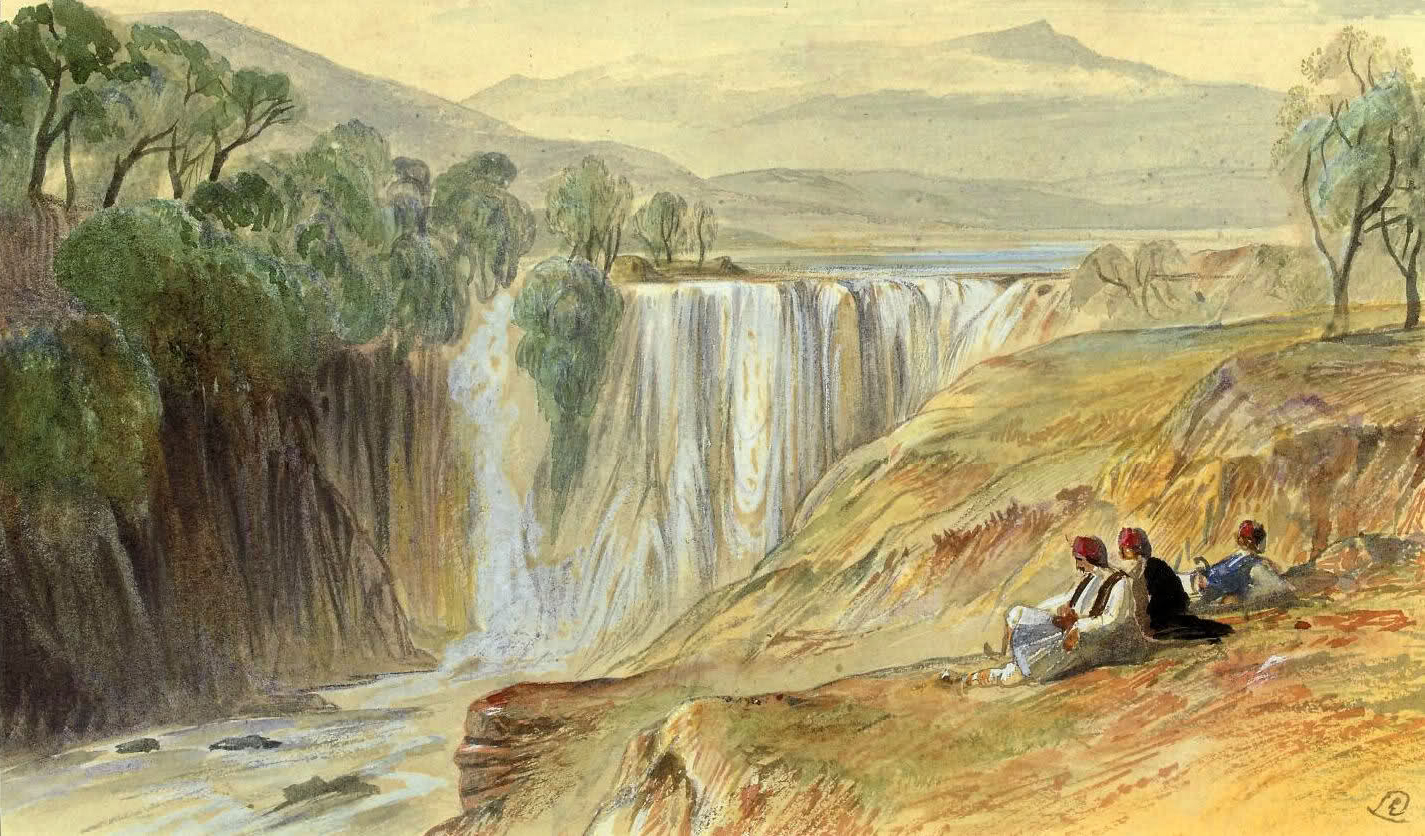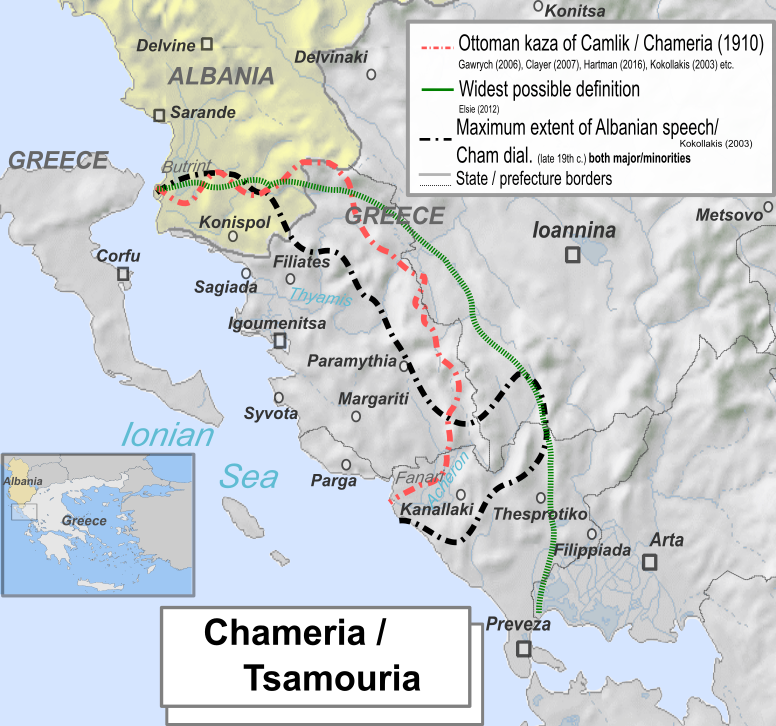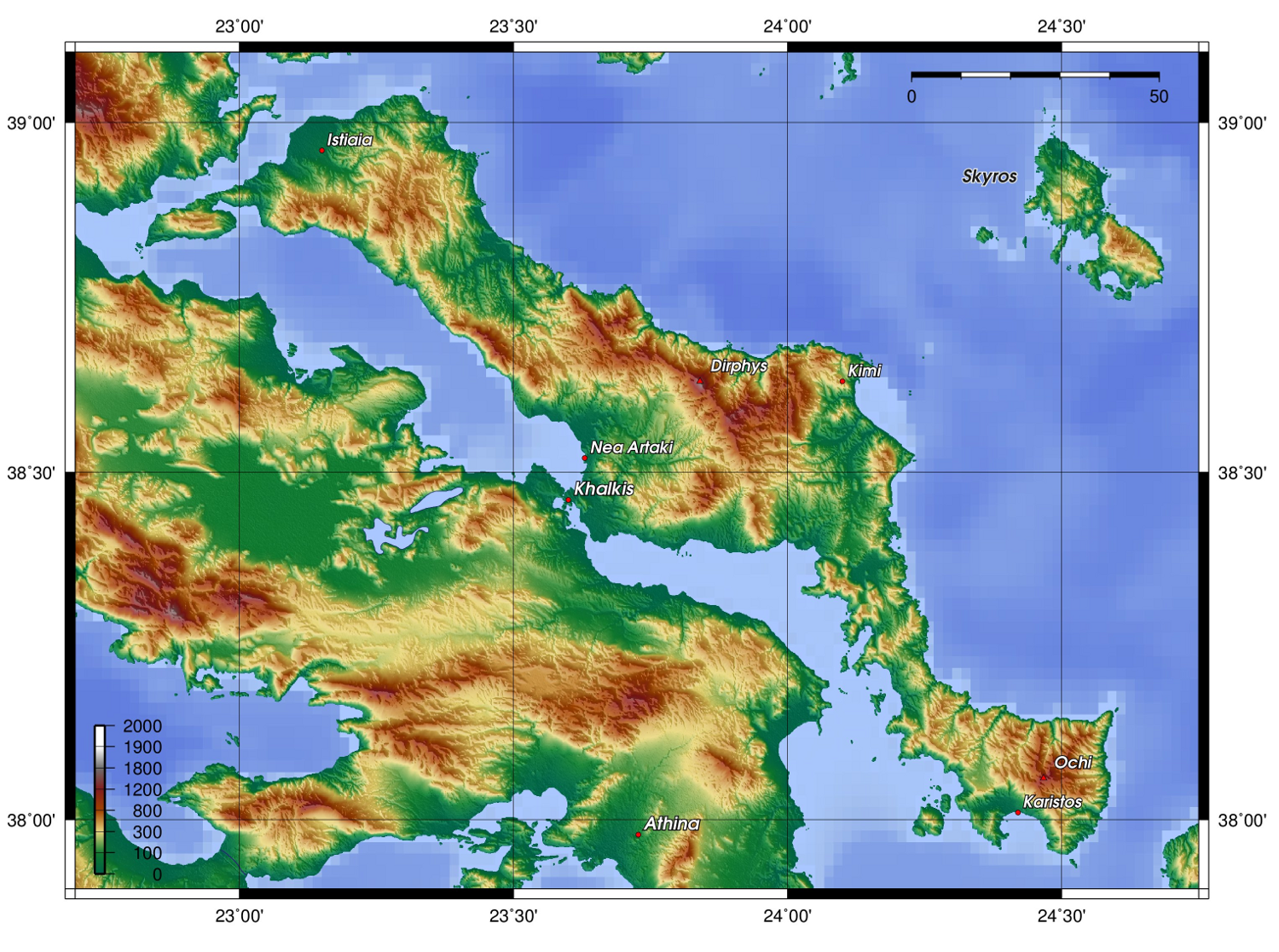|
Song Of Tana
The Song of Tana is an Albanians, Albanian folk ballad. It is considered one of the songs with the most variants in Albanian music. History According to folklorist Qemal Haxhihasani the song is related with the notion of the art of music. Ramadan Sokoli, one of the most prominent ethnomusicologists of the Balkans associated the song with the belief among past fyell players that the echo of the fyell had a positive influence on the herds. Name Generally the song is known as the Herders’ Song ( sq, Këngë barinjsh). In southern Albania it is known as the Song of Tana ( sq, Kënga e Tanës), while in northern Albania and Kosovo it is known as the Song of the Shepherdess ( sq, Kajka e çobaneshës). Song In Albania there have been recorded about 70 variants from the regions of Berat, Dibër County, Dibër, Elbasan, Fier, Gjirokastër, Gramsh, Elbasan, Gramsh, Kolonjë, Korçë, Kukës, Lushnjë, Pogradec, Skrapar, Tepelenë and Vlorë. Outside Albania the song is found among ... [...More Info...] [...Related Items...] OR: [Wikipedia] [Google] [Baidu] |
Albanians
The Albanians (; sq, Shqiptarët ) are an ethnic group An ethnic group or an ethnicity is a grouping of people who identify with each other on the basis of shared attributes that distinguish them from other groups. Those attributes can include common sets of traditions, ancestry, language, history, ... and nation native to the Balkan Peninsula who share a common Albanian Cultural heritage, ancestry, Albanian culture, culture, Albanian history, history and Albanian language, language. They primarily live in Albania, Kosovo, North Macedonia, Montenegro, Serbia as well as in Croatia, Greece, Italy and Turkey. They also constitute a large diaspora with several communities established across Europe, the Americas and Oceania. Albanians have Paleo-Balkan languages, Paleo-Balkanic Origin of the Albanians, origins. Exclusively attributing these origins to the Illyrians, Thracians or other Paleo-Balkan people is still a matter of debate among historians and ethnologists. The firs ... [...More Info...] [...Related Items...] OR: [Wikipedia] [Google] [Baidu] |
Lushnjë
Lushnjë (; in Lushnje's own dialect: ''Lushnje'' ; sq-definite, Lushnja) is a city and municipality in west-central Albania. It is located in the County of Fier. The total population is 83,659 (2011 census), in a total area of . History In January 1920, Lushnje was a provisional capital of Albania and the place of the Congress of Lushnje. Chieftains of Albania assembled in the town and declared Tirana first a provisional and then the definitive capital of Albania. 3 km away from Lushnjë is the Savra Field. This field is on the Lushnjë-Fier road. Here the first battle between Principality of Zeta and Ottoman Empire occurred in 1385 (the Battle of Savra). In this battle Balsha II was killed. Along with Fier, Lushnjë was the main district of the concentration camps during the Communist Regime; some of the camps included the villages of Savër, Gradishtë, Bedat, Gjazë, Rrapëz, Plug, etc. Geography Lushnje is in a hot Mediterranean summer type of clima ... [...More Info...] [...Related Items...] OR: [Wikipedia] [Google] [Baidu] |
A Cappella
''A cappella'' (, also , ; ) music is a performance by a singer or a singing group without instrumental accompaniment, or a piece intended to be performed in this way. The term ''a cappella'' was originally intended to differentiate between Renaissance polyphony and Baroque concertato musical styles. In the 19th century, a renewed interest in Renaissance polyphony, coupled with an ignorance of the fact that vocal parts were often doubled by instrumentalists, led to the term coming to mean unaccompanied vocal music. The term is also used, rarely, as a synonym for '' alla breve''. Early history A cappella could be as old as humanity itself. Research suggests that singing and vocables may have been what early humans used to communicate before the invention of language. The earliest piece of sheet music is thought to have originated from times as early as 2000 B.C. while the earliest that has survived in its entirety is from the first century A.D.: a piece from Greece called t ... [...More Info...] [...Related Items...] OR: [Wikipedia] [Google] [Baidu] |
Monophony
In music, monophony is the simplest of musical textures, consisting of a melody (or "tune"), typically sung by a single singer or played by a single instrument player (e.g., a flute player) without accompanying harmony or chords. Many folk songs and traditional songs are monophonic. A melody is also considered to be monophonic if a group of singers (e.g., a choir) sings the same melody together at the unison (exactly the same pitch) or with the same melody notes duplicated at the octave (such as when men and women sing together). If an entire melody is played by two or more instruments or sung by a choir with a fixed interval, such as a perfect fifth, it is also said to be monophony (or "monophonic"). The musical texture of a song or musical piece is determined by assessing whether varying components are used, such as an accompaniment part or polyphonic melody lines (two or more independent lines). In the Early Middle Ages, the earliest Christian songs, called plainchant (a ... [...More Info...] [...Related Items...] OR: [Wikipedia] [Google] [Baidu] |
Polyphonic
Polyphony ( ) is a type of musical texture consisting of two or more simultaneous lines of independent melody, as opposed to a musical texture with just one voice, monophony, or a texture with one dominant melodic voice accompanied by chords, homophony. Within the context of the Western musical tradition, the term ''polyphony'' is usually used to refer to music of the late Middle Ages and Renaissance. Baroque forms such as fugue, which might be called polyphonic, are usually described instead as contrapuntal. Also, as opposed to the ''species'' terminology of counterpoint, polyphony was generally either "pitch-against-pitch" / "point-against-point" or "sustained-pitch" in one part with melismas of varying lengths in another. In all cases the conception was probably what Margaret Bent (1999) calls "dyadic counterpoint", with each part being written generally against one other part, with all parts modified if needed in the end. This point-against-point conception is opposed t ... [...More Info...] [...Related Items...] OR: [Wikipedia] [Google] [Baidu] |
Çamëria
Chameria ( sq, Çamëria; el, Τσαμουριά, ''Tsamouriá''; tr, Çamlık) is a term used today mostly by Albanians to refer to parts of the coastal region of Epirus in southern Albania and Greece, traditionally associated with the Albanian ethnic subgroup of the Chams.Elsie, Robert and Bejtullah D. Destani (2012). ''The Cham Albanians of Greece: A Documentary History''. IB Tauris. . p. XXIX. "Chameria is a mountainous region of the southwestern Balkan Peninsula that now straddles the Greek-Albanian border. Most of Chameria is in the Greek Province of Epirus, corresponding largely to the prefectures of Thesprotia and Preveza, but it also includes the southernmost part of Albania, the area around Konispol. It is approximately 10,000 square kilometres in size and has a current, mostly Greek-speaking population of about 150,000. As an historical region, Chameria, also spelled Chamuria, Chamouria or Tsiamouria, is sometimes confused with Epirus which is in fact a much larger a ... [...More Info...] [...Related Items...] OR: [Wikipedia] [Google] [Baidu] |
Cham Albanians
Cham Albanians or Chams ( sq, Çamë; el, Τσάμηδες, ''Tsámidhes''), are a sub-group of Albanians who originally resided in the western part of the region of Epirus in northwestern Greece, an area known among Albanians as Chameria. The Chams have their own particular cultural identity, which is a mixture of Albanian and Greek influences as well as many specifically Cham elements.See Hasluk, 'Christianity and Islam under the Sultans', London, 1927. A number of Chams contributed to the Albanian national identity and played an important role in starting the renaissance of the Albanian culture in the 19th century. The Chams speak their own dialect of the Albanian language, the Cham Albanian dialect, which is a Southern Tosk Albanian dialect and one of the two most conservative ones; the other being Arvanitika. During the late 1930s Chams suffered from intimidation and persecution under the dictatorship of General Metaxas. Following the Italian occupation of Albania i ... [...More Info...] [...Related Items...] OR: [Wikipedia] [Google] [Baidu] |
Greece
Greece,, or , romanized: ', officially the Hellenic Republic, is a country in Southeast Europe. It is situated on the southern tip of the Balkans, and is located at the crossroads of Europe, Asia, and Africa. Greece shares land borders with Albania to the northwest, North Macedonia and Bulgaria to the north, and Turkey to the northeast. The Aegean Sea lies to the east of the mainland, the Ionian Sea to the west, and the Sea of Crete and the Mediterranean Sea to the south. Greece has the longest coastline on the Mediterranean Basin, featuring thousands of islands. The country consists of nine traditional geographic regions, and has a population of approximately 10.4 million. Athens is the nation's capital and largest city, followed by Thessaloniki and Patras. Greece is considered the cradle of Western civilization, being the birthplace of democracy, Western philosophy, Western literature, historiography, political science, major scientific and mathematical p ... [...More Info...] [...Related Items...] OR: [Wikipedia] [Google] [Baidu] |
Euboea
Evia (, ; el, Εύβοια ; grc, Εὔβοια ) or Euboia (, ) is the second-largest Greek island in area and population, after Crete. It is separated from Boeotia in mainland Greece by the narrow Euripus Strait (only at its narrowest point). In general outline it is a long and narrow island; it is about long, and varies in breadth from to . Its geographic orientation is from northwest to southeast, and it is traversed throughout its length by a mountain range, which forms part of the chain that bounds Thessaly on the east, and is continued south of Euboia in the lofty islands of Andros, Tinos and Mykonos. It forms most of the regional unit of Euboea, which also includes Skyros and a small area of the Greek mainland. Name Like most of the Greek islands, Euboea was known by other names in antiquity, such as ''Macris'' (Μάκρις) and ''Doliche'' (Δολίχη) from its elongated shape, or ''Ellopia'', ''Aonia'' and ''Abantis'' from the tribes inhabiting it. Its ... [...More Info...] [...Related Items...] OR: [Wikipedia] [Google] [Baidu] |
Arvanites
Arvanites (; Arvanitika: , or , ; Greek: , ) are a bilingual population group in Greece of Albanian origin. They traditionally speak Arvanitika, an Albanian language variety, along with Greek. Their ancestors were first recorded as settlers who came to what is today southern Greece in the late 13th and early 14th century. They were the dominant population element in parts of the Peloponnese, Attica and Boeotia until the 19th century.Trudgill (2000: 255). They call themselves Arvanites (in Greek) and Arbëror (in their language). Arvanites today self-identify as Greeks as a result of a process of cultural assimilation,GHM (1995). and do not consider themselves Albanian.Trudgill/Tzavaras (1977). Arvanitika is in a state of attrition due to language shift towards Greek and large-scale internal migration to the cities and subsequent intermingling of the population during the 20th century. Names The name Arvanites and its equivalents are today used both in Greek (, singular f ... [...More Info...] [...Related Items...] OR: [Wikipedia] [Google] [Baidu] |
Albanians Of Kosovo
The Albanians of Kosovo ( sq, Shqiptarët e Kosovës, ), also commonly called Kosovo Albanians, Kosovar/Kosovan Albanians or Kosovars/Kosovans, constitute the largest ethnic group in Kosovo. Kosovo Albanians belong to the ethnic Albanian sub-group of Ghegs, who inhabit the north of Albania, north of the Shkumbin river, Kosovo, southern Serbia, and western parts of North Macedonia. They speak Gheg Albanian, more specifically the Northwestern and Northeastern Gheg variants. According to the 1991 Yugoslav census, boycotted by Albanians, there were 1,596,072 ethnic Albanians in Kosovo or 81.6% of population. By the estimation in the year 2000, there were between 1,584,000 and 1,733,600 Albanians in Kosovo or 88% of population; as of 2011, their population share is 92.93%. History Pre-7th century Toponymical evidence suggests that Albanian was spoken in western and eastern Kosovo and the Niš region before the Migration Period. In this era, Albanian in Kosovo was in li ... [...More Info...] [...Related Items...] OR: [Wikipedia] [Google] [Baidu] |
Vlorë
Vlorë ( , ; sq-definite, Vlora) is the third most populous city of the Republic of Albania and seat of Vlorë County and Vlorë Municipality. Located in southwestern Albania, Vlorë sprawls on the Bay of Vlorë and is surrounded by the foothills of the Ceraunian Mountains along the Albanian Adriatic and Ionian Sea Coasts. It experiences a Mediterranean climate, which is affected by the Ceraunian Mountains and the proximity to the Mediterranean Sea. Vlorë was founded as Aulon as an Ancient Greek colony on the Illyrian coast and was conquered at different periods throughout history by Romans, Byzantines, Normans, Venetians and Ottomans. Between the 18th and 19th centuries, the Albanians gathered both spiritual and intellectual strength for national consciousness, which conclusively led to the Albanian Renaissance. Vlorë played an instrumental role in Albanian Independence as an epicenter for the founders of modern Albania, who signed the Declaration of Independence ... [...More Info...] [...Related Items...] OR: [Wikipedia] [Google] [Baidu] |







